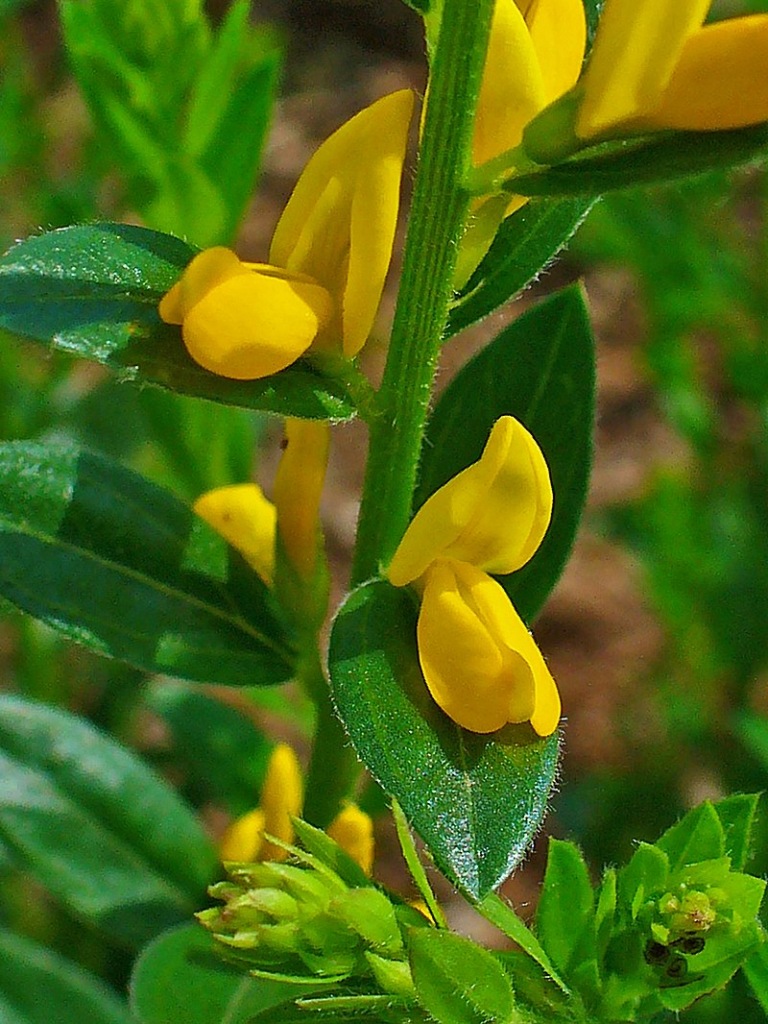
Also known as dyer’s greenwood, dyer’s whin, waxen woad, and waxen wood, this deciduous shrub is native to meadows and pastures in southern Europe and Turkey. It is a member of the pea family, Fabaceae, that also includes lupines, mimosa, and black locust. The plant grows 2-3′ tall and has a spreading form with multiple branches that are green and slightly hairy. The green leaves are lanceolate, .5-1″ long, and sessile. Golden yellow pea-like flowers 3/4″ long appear in erect terminal racemes 1-3″ long from late spring to summer with sporadic blooming until fall. The flowers are attractive to bees and give way to elongated fruits that are 1-3″ long and contain 8-12 seeds that ripen in late summer to early fall. Dyer’s broom has been used to make a yellow dye, together with woad a green dye, and in herbal medicine to treat a variety of health problems. G. tinctoria is a good choice for a xeriscape where it can be used as a ground cover or in borders or foundation plantings as well as in herbal, medicinal, wildlife, pollinator, rock, and gravel gardens. Care must be taken, however, to watch for invasiveness. The genus name, Genista, is the Latin name for the plant known as broom. The specific epithet, tinctoria, comes from the Latin word tingere, meaning to dye, and refers to it use in dyeing. Photo Credit Wikimedia Commons
Type: Deciduous shrub

Outstanding Feature: Flowers
Form: Oval to spreading
Growth Rate: Slow to moderate
Bloom: Erect terminal racemes 1-3″ long of golden yellow pea-like flowers 3/4″ long from late spring to summer with sporadic blooming until fall.
Size: 2-3′ H x 2-3′ W
Light: Full sun
Soil: Average to poor, rocky or sandy, medium moist to dry, well-drained; drought resistant once established
Hardiness: Zones 4-7
Care: Prune lightly immediately after flowering to extend bloom time
Pests and Diseases: Generally healthy but susceptible to aphids, gall mites, powdery mildew, honey fungus, and rust.
Propagation: Seed, semi-ripe stem cuttings; resents transplanting
Outstanding Selections:
‘Flore Pleno’ (dwarf)
‘nana’ (dwarf)
‘Royal Gold’
Photo Credit: H. Zell, Wikimedia Commons